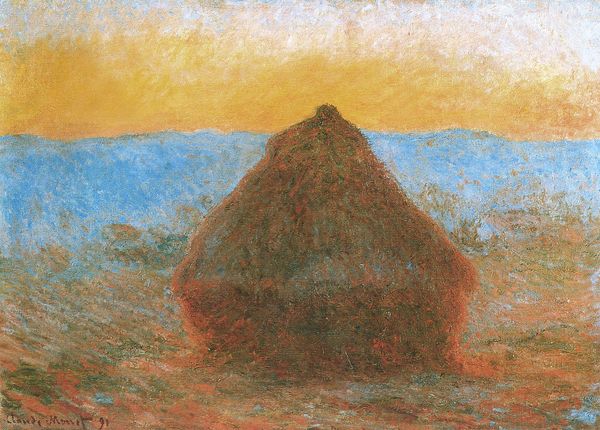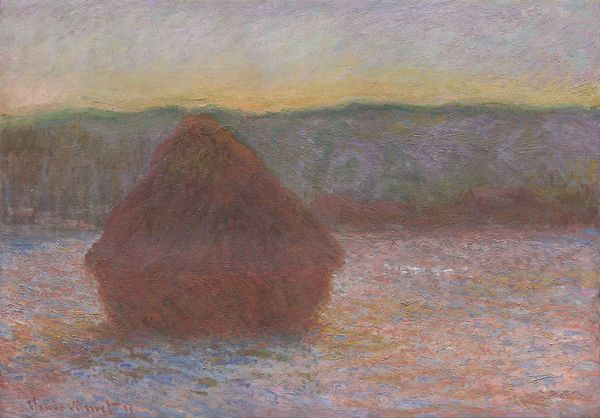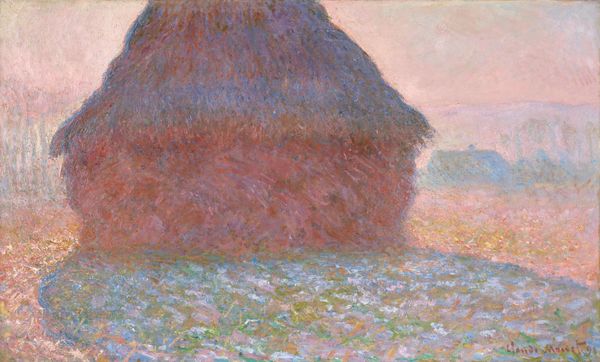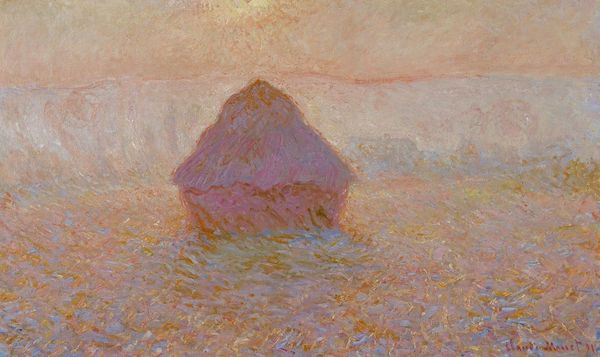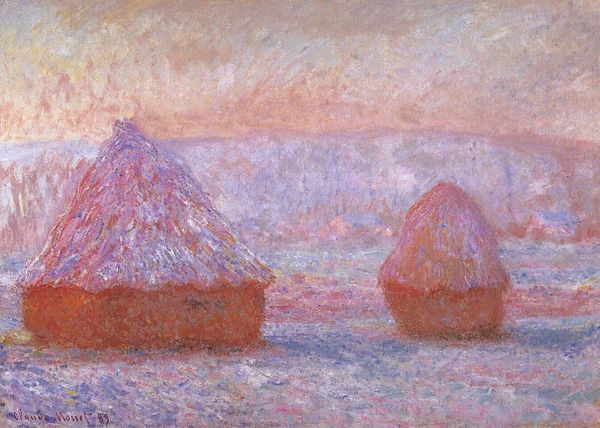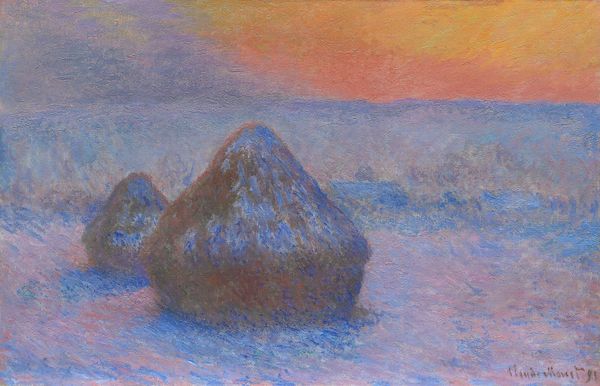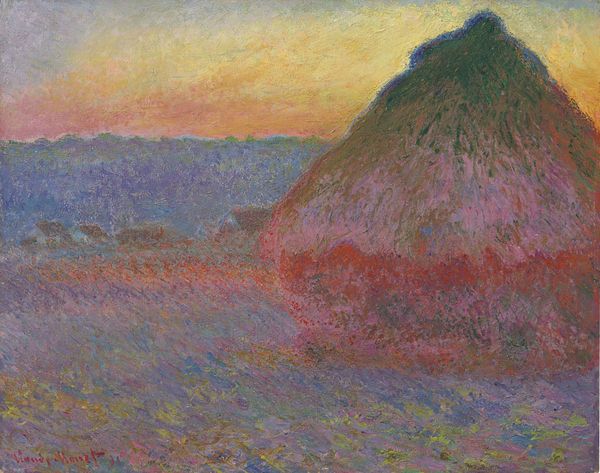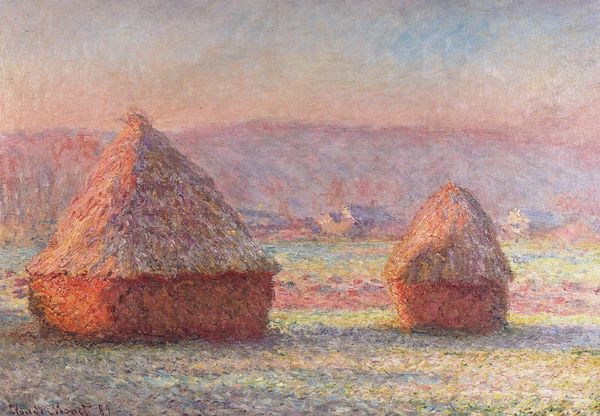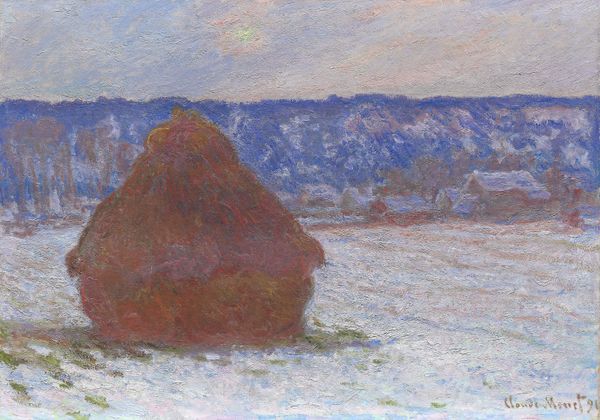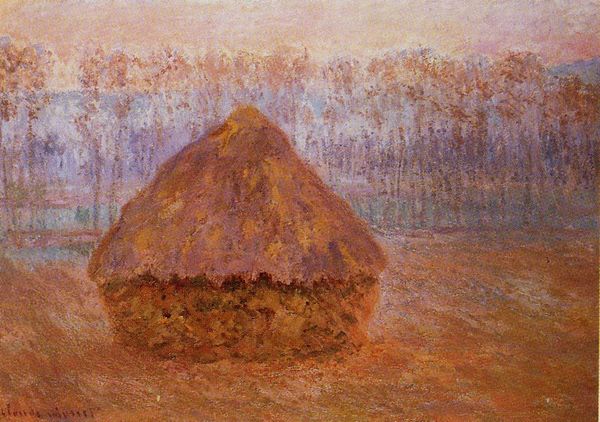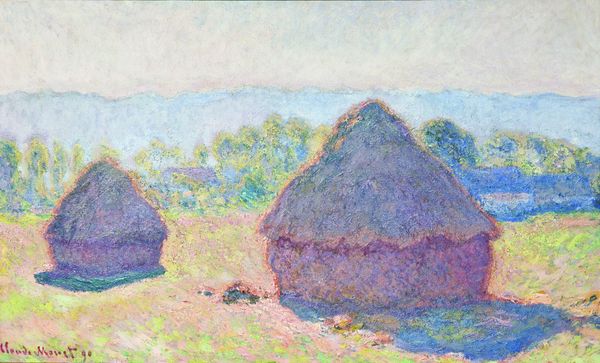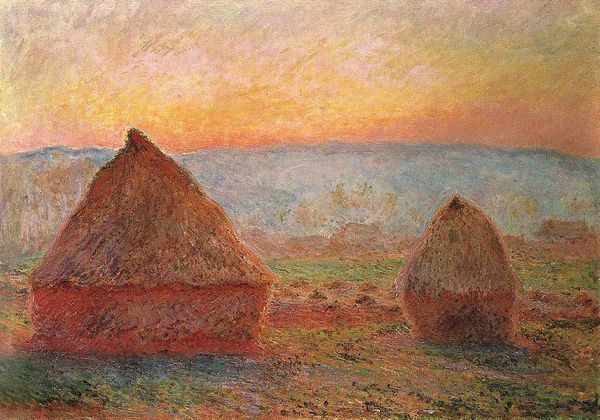
Dimensions: 65 x 92 cm
Copyright: Public domain
Curator: Ah, yes, Monet's "Haystacks at Sunset, Frosty Weather," painted in 1891. The canvas employs oil paints, masterfully applied en plein-air to capture the fleeting atmospheric effects. Editor: My initial impression is one of serenity. The soft, muted tones create a hazy, almost dreamlike quality. It feels quiet and contemplative, almost like a whispered secret. Curator: Absolutely. The haystack, central to the composition, is rendered through a symphony of colors, not merely brown. Notice the blues, violets, even yellows that animate its form, capturing the light's subtle variations. This reflected light disrupts any true perception of mass and instead presents an ephemeral image, existing briefly in the sunset of the day. Editor: Monet’s Haystacks series really shifted painting's relationship to agriculture. These were working fields, integral to France's economic stability. Elevating stacks of winter fodder to this artistic status certainly validated that toil. How do you see that exchange play out formalistically? Curator: By focusing on form over content, Monet elevates the mundane, rendering it extraordinary. This work isn’t merely a hay bale. It’s a complex study in color and light, structured around the formal geometries of the stack itself. See how the lines create movement without becoming perspectival. Editor: It does, indeed. And the composition itself – the vast, muted landscape playing backdrop to the texture of the stack – also prompts me to think about social perspective: How different individuals viewing this would relate to its symbolic presentation of the everyday lived experience. Curator: And isn't it the subtle manipulation of pigment that creates its profound impact? It's that ability to generate affect through form that makes it enduring. Editor: Yes, through that treatment Monet transforms this scene into something transcendent.
Comments
artera over 1 year ago
⋮
Today the name Claude Monet (1840-1926) is virtually synonymous with the artistic movement known as Impressionism. Indeed, the name of the movement derives from a painting the artist himself executed in 1873, entitled Impression, Sunrise. If there is one salient aspect that sets Monet's oeuvre apart from his fellow Impressionists, it would perhaps be his meticulous exploration of the behavior of natural light at different times. Monet's Haystack (also known as "Grainstack" series was painted between 1890 and 1891, and reflected the artist's passion for rendering his everyday experiences. The stacks themselves stood directly behind his house in Giverny. The series as a whole tracks the effects light, both seasonal and during different times of the day, has upon the appearance and the actual structure of the haystack In Haystack at Sunset, Frosty Weather, the haystack occupies the left foreground of the painting wherein its apex abuts the line of the horizon. This subtly elevates the painting from being merely an instance of naturalistic description to something which is entirely more abstract. The stack is seen in shadow and forms a silhouette that, although it is set apart from its immediate surroundings, provides continuity through Monet's palette, which is comprised of a significant amount of white. What Monet brings to such an apparently mundane subject is a sense oi wonder and awe, and renders concrete the idea that nature, far from being static and fixed, is in fact dynamic and even revelatory.
Join the conversation
Join millions of artists and users on Artera today and experience the ultimate creative platform.
